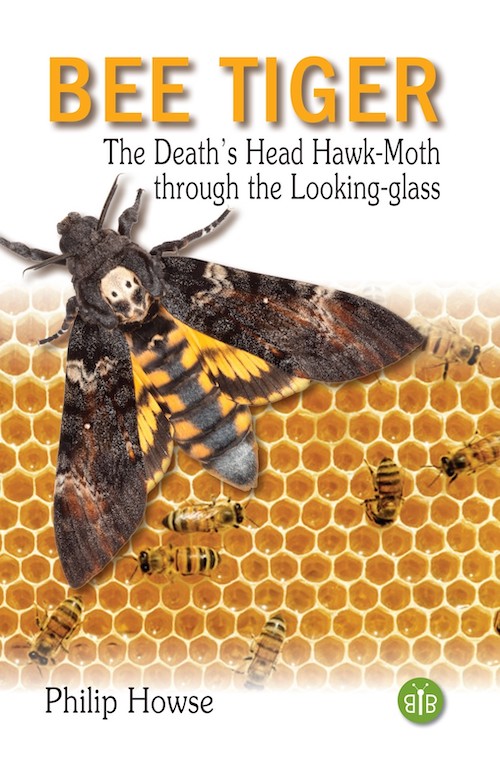 |
by Philip Howse
The clear skull markings on the thorax of the large and impressive Death's Head Hawk-moth are truly fascinating, often perceived as a threat or leading to superstitious and mythological beliefs. Here the author, an authority in mimicry, discusses why we are so intrigued by these markings but also explains how other animals may perceive its form and behaviour. This moth has evolved to deceive its main predators, especially birds and bats, and to rob bees of their honey without getting stung, again by deceiving them of its true nature, with acoustic, visual and chemical signals in play. It is able to do this because of the obvious, but usually overlooked, fact that other animals live in a different sensory world to us, i.e. their perceptions are different.
Having reviewed several of the author's previous works - Butterflies - Messages from Psyche, Giant Silkmoths - Colour, Mimicry and Camouflage and Seeing Butterflies - New Perspectives on Colour, Patterns and Mimicry - I was quite keen to see how he would approach the focus on a single species, namely the Death's Head Hawk-moth - an iconic species within the fauna of Britain and Ireland.
Following an introduction, the book is broken down into a number of chapters as follows.
I've come to the conclusion that I like this author's works for the simple reason that he makes me think - conventional wisdom and works can sometimes feel rather dull in comparison! Even if I don't always find myself agreeing with what is written - after all, some of the statements made are opinion rather than fact - what is written always makes me question my own perspective on a given subject and I always come away feeling enlightened.
Aside from these generalisations, I really appreciate the various insights into the charismatic Death's Head Hawk-moth, many of which were new to me. For example, the larvae of a closely related species, Acherontia styx, that is found in the far east, are a pest of crops and the adults are a pest of hives, resulting in a lower honey yield. To counter this, pupae are ploughed up in some regions in order to expose them to birds. Caterpillars are also removed from their foodplants by hand. The Death's Head Hawk-moth was itself once considered to be a pest of potato crops on our own shores, prior to the development of certain insecticides. The caterpillar is also a robust creature, and able to ingest some of the most poisonous plants we know, including Deadly Nightshade. The adult proboscis is also unusually short and pointed, allowing the adult to pierce the membrane of a honey cell, before it hoovers up the contents. The ability of the moth to squeak by forcing air through its proboscis is also touched upon, using a mechanism not dissimilar to a set of bagpipes, and there is also the simple observation that an adult that has been feeding on honey temporarily loses the ability to make such a sound! If you want to know more about what makes the Death's Head Hawk-moth 'tick', then this book is for you.
I found the writing style very appealing for the most part, with detours into art, mythology, classical literature and even the movies - I'm sure that many readers will be familiar with the use of the Death's Head Hawk-moth in the artwork for the film Silence of the Lambs. The ability of adults to locate hives provides a good example of such a detour - there is first a prelimary discussion on odours, and a description of how some Amazonian tribes are able to identify members of other tribes based on their smell. The book is packed with such insights! Be warned that some of these detours can be quite lengthy - the auditory senses of both the moth and bats is preceded by eight pages discussing these senses before relating them to the subject at hand. There is a similarly length detour when discussing sight and, I have to admit, I did find some of this preamble to be rather irrelevant and distracting from the subject at hand - in this case, the aerial battle between birds and the moth. That being said, I thought that the consideration of the different viewpoints - ourselves, honeybees, bats and birds - to be an excellent way of tackling the subject.
In summary, the book provides a wonderful mix of topics and I'm sure that many readers will be delighted with the detail provided. I guarantee that, whatever your main interest, you will come away with a new perspective not just of the Death's Head Hawk-moth, but also potentially of the world around you. Like I said, this author makes you think!